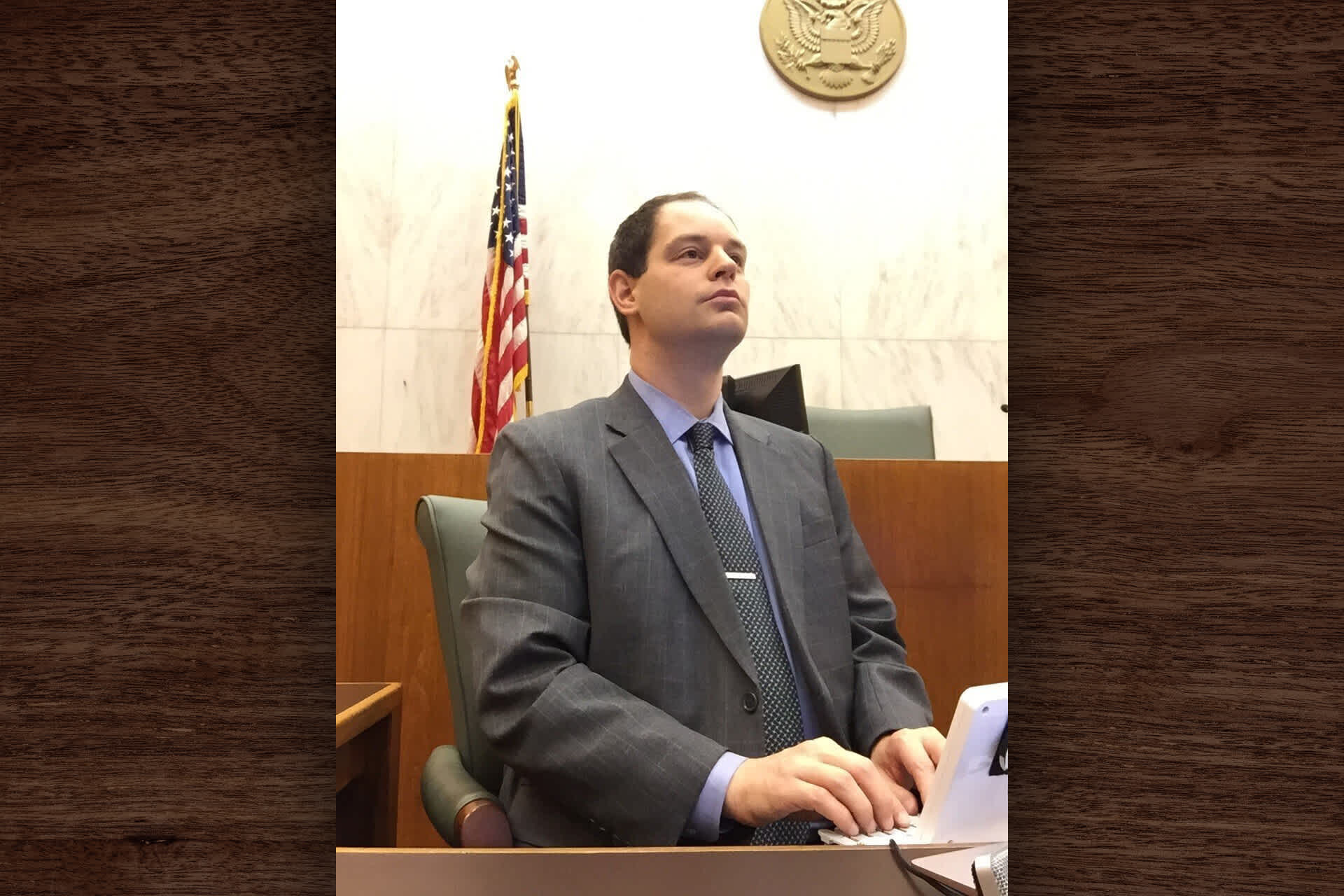Real Talk with Joshua Edwards

According to the United States Bureau of Labor Statistics, the need for captioners is going up. Joshua Edwards is a captioner. Using a stenographic machine, he taps out captions for people who are deaf or hard of hearing so they can follow the words of a stage musical or lecture. He got his start as a court reporter, making transcripts of legal trials. Here, Edwards talks about his work.
Let’s begin with your work as captioner. Can you describe what you do?
I co-own a business called Steno Captions. Most of the work we do is for college classes—undergraduate, some masters, and PhD. I’m currently following some students who are deaf and hard of hearing through law school. This is fascinating to me, because it’s like going to law school and listening to all the lectures.
What I provide is real-time captioning. The student has an iPad, which connects wirelessly to a router. The router is connected to my laptop, which is connected to my stenographic machine. I usually sit in the front row, off to the side, where there’s an outlet, so I can plug in my laptop. I transcribe what the professor says. The student can sit anywhere. They don’t have to be next to me. And they read the text on the iPad.

How is using a stenographic machine different from using a keyboard?
Typing on a QWERTY, or standard, keyboard is typing by spelling, one letter at a time. Stenography is not typing by spelling. It’s writing by sound. A steno machine has 22 keys. I can write a word that has 10 or 11 letters in two strokes of the steno machine. I’m going at least 80% faster than somebody typing on a keyboard. So, I could write your first name, Brian, in one stroke, using a combination of br, because those are the first two consonants of your name. And then n with the right hand, which is the ending consonant. And then long i with my thumb.
How did you decide to focus on captioning for the deaf?
I started out as a court reporter. I spent five years doing depositions in court, then one year in federal court. It was not for me. I needed to be challenged more. I was talking to a friend who said, “Well, you could do captioning.” And I said, “What is captioning?” She said there’s so much work in this field that they can’t find enough people to do it. And that’s true today. My business partner, Wendy Baquerizo, and I are constantly looking for new people.
What other events do you caption?
Musical performances. I’ve captioned Broadway shows, like My Fair Lady. I’ve captioned the Tony Awards for the past four years. I just captioned an off-Broadway play. And I’ve been to the New York Philharmonic. Not only do I get to watch the performances, I’m getting paid to be there.

Aren’t the performances the same every night?
You need a stenographer when there’s variation in the script, or when the show has ad-lib parts. And some shows do have ad-lib. Or they’ll have a talk-back with the cast after the show. They come sit onstage, and the audience interacts with them. I transcribe that, and the audience can read the captions.
Let’s talk about your experience as a court reporter, since that’s where many stenographers work. Why is the court reporter’s work important?
People have a right to appeal if they get an adverse ruling in court. And what is an appeal based on? It’s based on your transcript. Let’s say somebody’s convicted of a crime. They have a constitutional right to appeal that conviction. They can go to an appellate court, to see if there was some error in judgment, an error of law that allows them to have a new trial. And the appellate court is going to read the transcript, and make a determination based on that. What the witnesses said—all of that is going to be preserved by the transcript that the stenographic court reporter creates.
What skills would prepare a young person for this kind of work?
It’s hard to say what skills are absolutely required. You never know you’re going to be great at this until you try it. I’m a trained musician: I sing. When I was a teenager, I taught myself to play all the songs from Phantom of the Opera from sheet music. Having that musical background accustomed me to putting in hours and hours of practice. And that’s how you get better at something: It’s by throwing yourself into it. Anything that’s complicated can be made easy by learning the fundamentals and practicing until you master them.
How does one train for this work? And for how long?
There are two ways to train. Most people go to a court-reporting school. There’s a list on the National Court Reporters Association website of accredited schools. The second way is self-study. There are online communities—for example, forums for talking about resources for stenography. There are even steno-machine overlays that you can put onto a regular computer keyboard to turn it into a steno machine.
It took me 14 months. A lot of people take several years. But it really depends on the individual.
Any words of advice for people who are interested in becoming a stenographer?
There’s the misconception that this job is becoming obsolete. It’s not becoming obsolete in any way. It’s still very much in demand. The challenge we face is really that fewer people know about it. But there is such a demand. You should look into the state associations. Most of them have mentoring programs. They will help you, if this is something you’re interested in learning more about.

